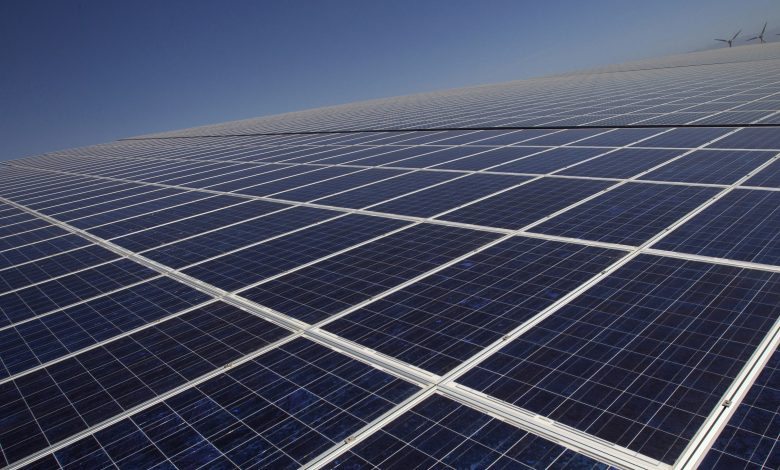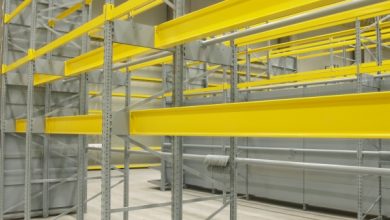Solar Panel – How Do Solar Panel Works & Its Types

How Do Solar Panel Works, Types and Why we need them?
Solar panel are solar panels that capture the sun’s rays and convert them to power or heat. A solar panel consists of a group of solar (or photovoltaic) cells that can be used to generate electricity via the photovoltaic effect.
Monocrystalline solar panels, polycrystalline solar panels, and thin-film solar panels are the three main types of commercially accessible solar panels. Bifacial panels, organic solar cells, concentrator photovoltaics, and even nano-scale advances like quantum dots are among the interesting technologies now in development.
Solar panels are a cost-effective technique to generate electricity for a variety of uses. Off-grid living is the most apparent choice. Living off-grid entails residing in a location that is not connected to the main power grid. Solar power systems are ideal for remote homes and cabins. It is no longer required to pay exorbitant rates to have electric utility poles and cabling installed from the nearest main grid access point. A solar electric system is theoretically less expensive and, if properly maintained, can produce power for up to three decades.
Apart from the fact that solar panels allow you to live off the grid, probably the most significant advantage of solar panels is that it allows you to save money.
Efficiency
Efficiency is how much energy the different solar panel types can produce from the amount of sunlight it receives. Essentially, efficiency determines how much power a solar panel can produce. The most efficient solar panel is the monocrystalline solar panels. Monocrystalline solar panels can reach over 20 percent efficiency. On the other hand, polycrystalline panels can usually only reach 15 to 17 percent efficiency. This gap between the two panels may be closing in the future as technology improves to make polycrystalline panels more efficient. The least efficient solar panel is the thin-film. Thin-film usually has lower efficiency and produces less power than either of the crystalline options with efficiency at only approximately 11 percent. The power capacity of a thin-film panel can vary though because there isn’t a standard size, and some models could produce more power than others.
Cost
Price can make or break a solar decision, and the types of solar cells you choose is one of the factors that affects price the most. The cheapest solar panels are thin-film panels because they can be manufactured at the lowest cost. The CdTe are the cheapest solar panels on the market, but the CIGS can be more expensive. Thin-film frames are usually lighter, so you can often save on installation costs. On the other hand, monocrystalline is the most expensive solar panel option right now. Manufacturing pure silicon can be expensive, and the panels and frames are heavy, leading to higher installation costs. Polycrystalline panels were developed to reduce the cost of solar panels, and they are usually more affordable than monocrystalline. But this gap between monocrystalline and polycrystalline panels may close as innovators discover more efficient ways to manufacture monocrystalline solar cells.
How Do Solar Panel Works
They gather and convert pure renewable energy in the form of sunlight into electricity, which may subsequently be utilised to power electrical loads. Solar panels are made up of several solar cells, each of which is made up of layers of silicon, phosphorous (which gives negative charge), and boron (which provides the positive charge). Solar panels absorb photons and generate an electric current as a result. The energy released when photons strike the solar panel’s surface causes electrons to be pushed out of their atomic orbits and released into the electric field formed by the solar cells, which subsequently pulls these free electrons into the electric field generated by the solar cells.
Solar panel is becoming more economical, cheap and as technology improves, it may even become cheaper than traditional electricity supplied by fossil fuels. It’s an appealing technology to invest in because of government incentives for both homeowners and companies.
While solar energy has a lot of advantages, it is still out of reach for the majority of people. Unfortunately, not many electricity consumers can afford to install their own photovoltaic system. Some people do not own their homes, or their homes may not receive enough sunlight for solar panels to be effective. While the cost of solar panels has dropped considerably over the last decade, the initial investment has remained high.
Monocrystalline Solar Panels
Monocrystalline solar panels are the most widely utilized solar panels on the market today due to their numerous benefits. 1 The semiconductor material silicon is used in around 95% of today’s solar cells. Silicon is plentiful, stable, non-toxic, and compatible with existing power generation technology.
Monocrystalline silicon solar cells are made by first generating a highly pure silicon ingot from a pure silicon seed using the Czochralski technique, which was initially established in the 1950s. After that, a single crystal is sliced from the ingot, yielding a silicon wafer with a thickness of around 0.3 millimeters (0.011 inches).
Polycrystalline
Because polycrystalline solar cells do not require the time and energy required to build and cut a single crystal, they are less expensive to manufacture than monocrystalline solar cells.
Solar panels using polycrystalline crystals were the first to be produced. The rectangular shape created when silicon is heated and put into a mould distinguishes these cells within a solar panel. Polycrystalline solar panels are made very efficiently by industry professionals, with very little silicon wasted in the process. This helps to keep the cost of installing polycrystalline solar panels or even leasing solar panels low.
Polycrystalline cells, on the other hand, are less heat resistant and efficient than monocrystalline cells. They do not create as much electricity from the sun, in particular. This can have an impact on things like the amount of solar energy electricity you can sell.
While the grains of silicon crystals provide impediments to effective electron transport. They are actually more efficient in low-light than monocrystalline cells. Can maintain output even when not squarely pointed at the sun. Because of their ability to maintain electricity generation in poor conditions.They end up with roughly the same overall energy output. Therefore it requires battery storage. Off-grid solar systems must be designed appropriately so that they will generate enough power throughout the year and have enough battery capacity to meet the home’s requirements,
Polycrystalline solar panels have larger cells than monocrystalline panels, so they may require more space to produce the same quantity of electricity. 4 They are also less sturdy and long-lasting than other types of panels, albeit the differences are minor.
Thin-Film
Due to the exorbitant cost of creating solar-grade silicon. A variety of second- and third-generation solar cells. Known as thin-film semiconductors were developed.They are a newer type of solar panel and less frequently used for homes. But they are growing in popularity.The thin film panel gets its name from how it’s produced. Layers of semiconductor materials (silicon, cadium telluride, and copper indium gallium selenide).Are rolled out as a film on a surface.
Dye-Sensitized Solar Cells (DSSC)
Due to the exorbitant cost of creating solar-grade silicon. A variety of second- and third-generation solar cells known as thin-film semiconductors were developed. Thin-film solar cells use less material because they used.A layer of silicon as thin as one micron thick. Which is about 1/300th the thickness of monocrystalline and polycrystalline solar cells. In addition, the silicon is of lower quality than that found in monocrystalline wafers.
Quantum Dots
Although this technology has only been explored in laboratories, it has exhibited a number of promising characteristics. Because quantum dot cells are constructed of several metals and operate on a nanoscale, they have a high power-to-weight ratio. Unfortunately, if not handled and disposed of appropriately, they can be extremely harmful to people and the environment.




